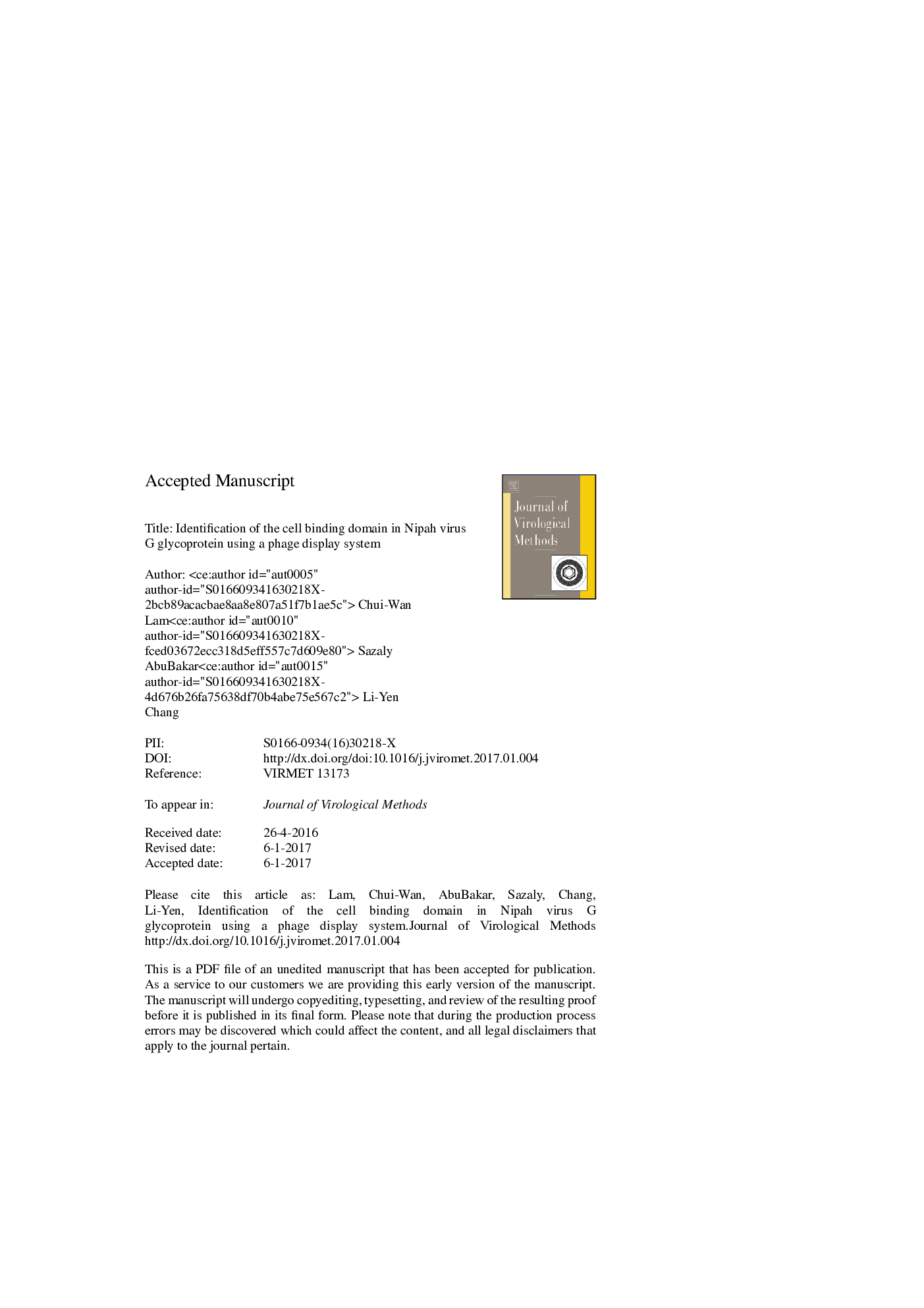| Article ID | Journal | Published Year | Pages | File Type |
|---|---|---|---|---|
| 5673064 | Journal of Virological Methods | 2017 | 38 Pages |
Abstract
Nipah virus (NiV) is a highly pathogenic zoonotic paramyxovirus with unusual broad host tropism and is designated as a Category C pathogen by the U.S. National Institute of Allergy and Infectious Diseases. NiV infection is initiated after binding of the viral G glycoprotein to the host cell receptor. The aim of this study was to map the NiV G glycoprotein cell binding domain using a phage display system. The NiV G extracellular domain was truncated and displayed as attachment proteins on M13 phage g3p minor coat protein. The binding efficiency of recombinant phages displaying different regions of NiV G to mammalian cells was evaluated. Results showed that regions of NiV G consisting of amino acids 396-602 (recombinant phage G4) and 498-602 (recombinant phage G5) demonstrated the highest binding to both Vero (5.5Â ÃÂ 103 cfu/ml and 5.6Â ÃÂ 103 cfu/ml) and THP-1 cells (3.5Â ÃÂ 103 cfu/ml and 2.9Â ÃÂ 103 cfu/ml). However, the binding of both of these recombinant phages to THP-1 cells was significantly lower than to Vero cells, and this could be due to the lack of primary host cell receptor expression on THP-1 cells. Furthermore, the binding between these two recombinant phages was competitive suggesting that there was a common host cell attachment site. This study employed an approach that is suitable for use in a biosafety level 2 containment laboratory without the need to use live virus to show that NiV G amino acids 498-602 play an important role for attachment to host cells.
Related Topics
Life Sciences
Immunology and Microbiology
Virology
Authors
Chui-Wan Lam, Sazaly AbuBakar, Li-Yen Chang,
